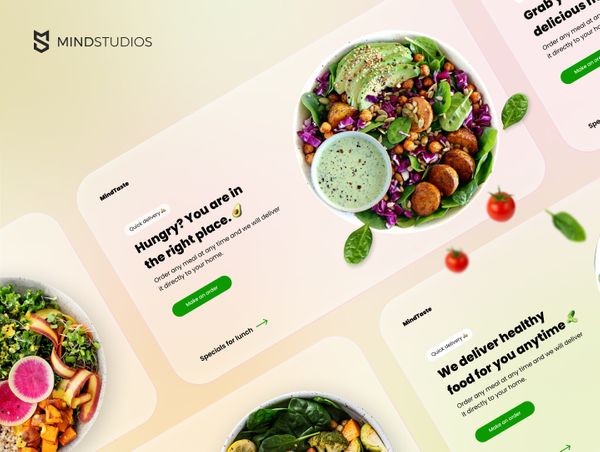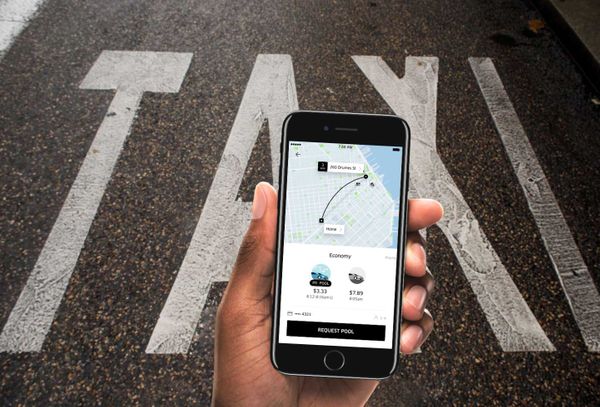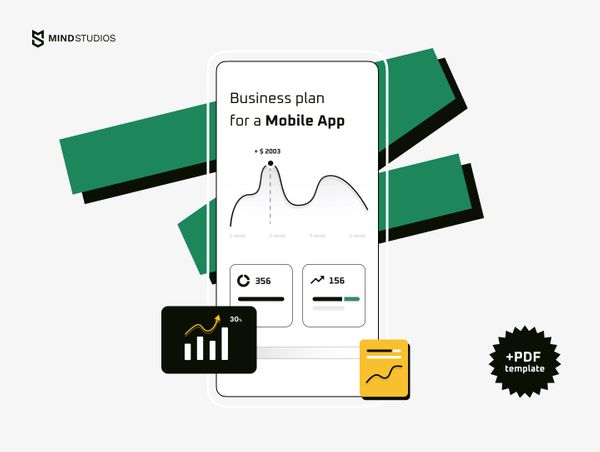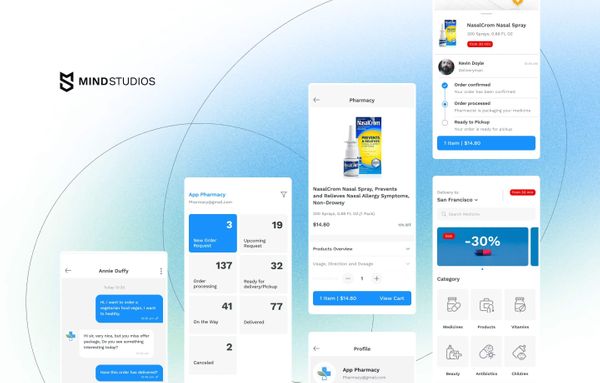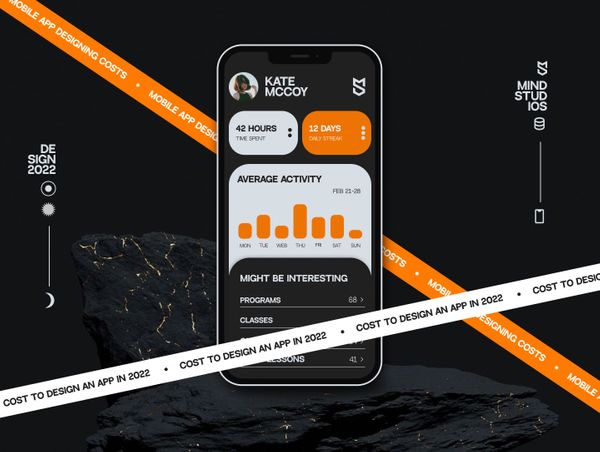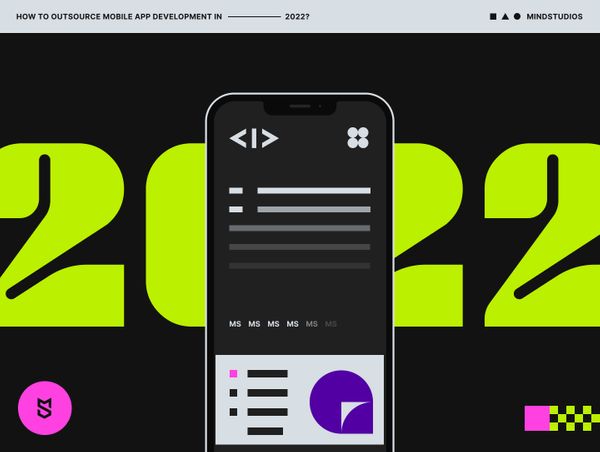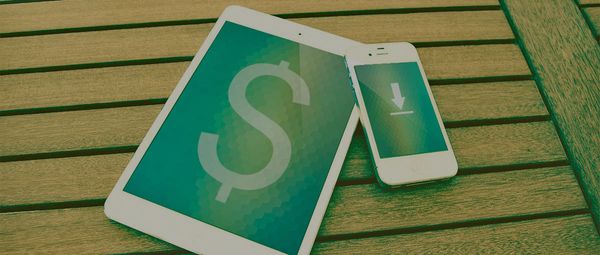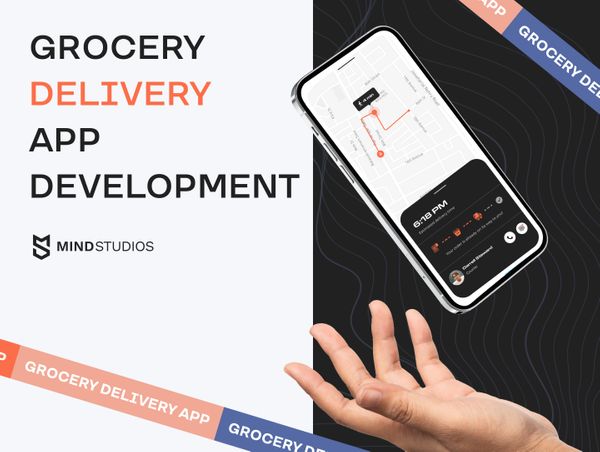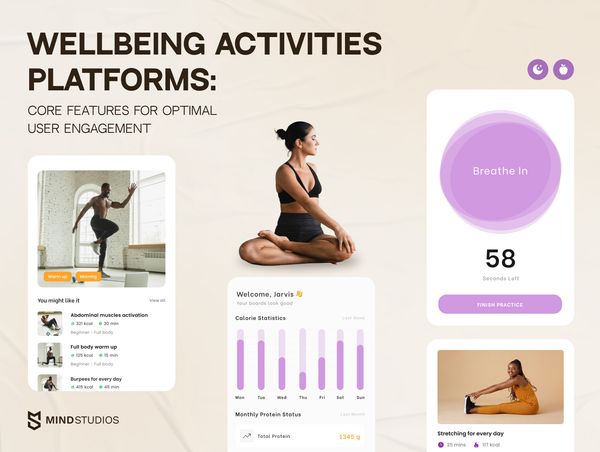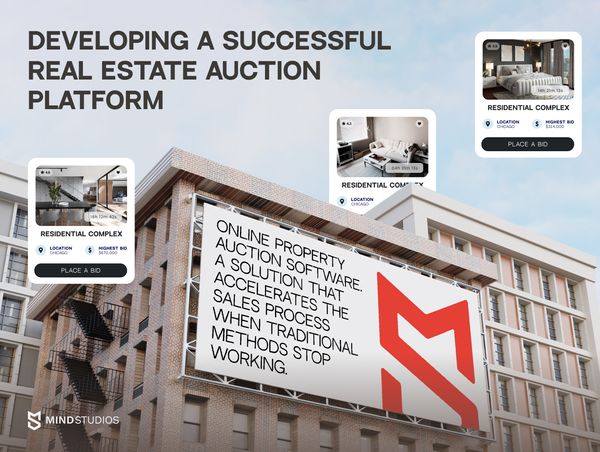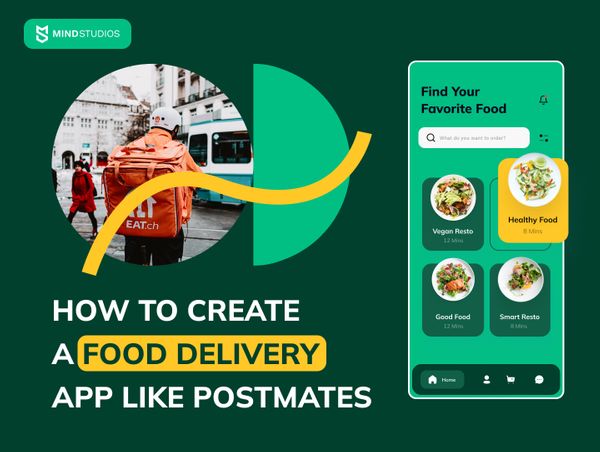
With the development of Postmates-like apps being the rage it is, entering the market isn’t easy. How to create a food delivery app that will find its audience and bring you success? According to our experience, the success of any mobile app is preceded by thorough market research.
Thanks to analyzing competitors’ solutions, and target users’ needs, we managed to build a competitive online delivery app James Butler for Denmark. Particularly, we figured out that busy Danish preferred to order delivery without specifying detailed product descriptions on the shopping lists. Taking short product descriptions as our trump card, we got almost 5,000 shopping lists created within the app three months after its launch.
In this article, we’ll analyze the ever-growing popularity of meal delivery services, focus on the stages you’ll need to complete to start your food delivery app out alive and thrive among all your rivals, and share tips on how to pick a skilled team to work on your project.
Food delivery app business in various regions
Despite economic headwinds, the online food delivery market is thriving. Accroding to Statista, the online food delivery market is expected to generate $1.02 trillion in revenue by the end of 2023. The overall market size is estimated to expand at a 12.67% annual rate (CAGR 2023-2027), resulting in a market volume of US$1.65 trillion by 2027.
The biggest online food delivery market share belongs to China ($395.9 billion in 2023). Behind China settled the US ($269.80bn), United Kingdom ($40.64bn), India ($33.36bn), Canada ($12.75bn), Australia ($10.34bn), and Saudi Arabia ($10.02bn).
If you plan to make a food delivery app in these or other regions, it’s vital to conduct thorough market research and calculate the share you can possibly capture taking into account the competition volume and how closely your product’s unique selling point fits in your users' preferences. If you're thinking of starting a food delivery app project in multiple locations, consider focusing on one region first. Once you succeed with it, you can then develop new markets.
Why should you build a food delivery app?
Before investing good money in your food delivery app development, first, let’s see what benefits your business might get from building a Postmates-like app.
Get fast ROI
Building a mobile app for your food delivery business has all the prerequisites to help you attract solid investments just in a couple of years. Here are some examples:
- US-based food ordering startup HungryUS has raised $1.1M in funding two years after its launch
- Founded in 2021, a Paris-based grocery delivery company Cajoo has raised $47.2M in funding over two rounds in the same 2021 year
- Yummy, a food delivery mobile app startup that operates across Latin America, founded in 2020, within two years managed to raise $83.9M in funding
Serve more dishes to more people with less struggle
By equipping your food delivery business with a mobile app, you have all chances to explode your customer base and streamline the last-mile order delivery. For example, a single instant delivery tracking feature built in your app can increase customer retention rate, reduce the number of complaints, and significantly improve user satisfaction.
Knowing this, the founders of the German startup Karla decided to make an advanced delivery tracking tool their trump card while building a website and app early in 2022. Karla offers their customers to keep track of their deliveries in real-time — from delivery times to drop-off points and returns.
Experts from PYMNTS forecast that Karla will be able to mitigate over 71% of the disputes caused by delivery service errors like sending to the wrong address or charging the wrong amount.
Master new marketing channels
One more reason why you should develop a food delivery app is that it can provide you with additional powerful ways to promote your business. To name a few, app push notifications have more than three times higher average open rate (81% for Android) than emails (21,5% for all industries).
If done well, push notifications can help you improve user engagement and increase retention rate by up to 92%. By sending location-based push notifications with an irresistibly enticing offer to passers-by, Telepizza has made $2400-2600 from a single message.
However, all the above-described advantages of having a mobile app could work for your food delivery business only if you know how to start a food delivery app development the right way.
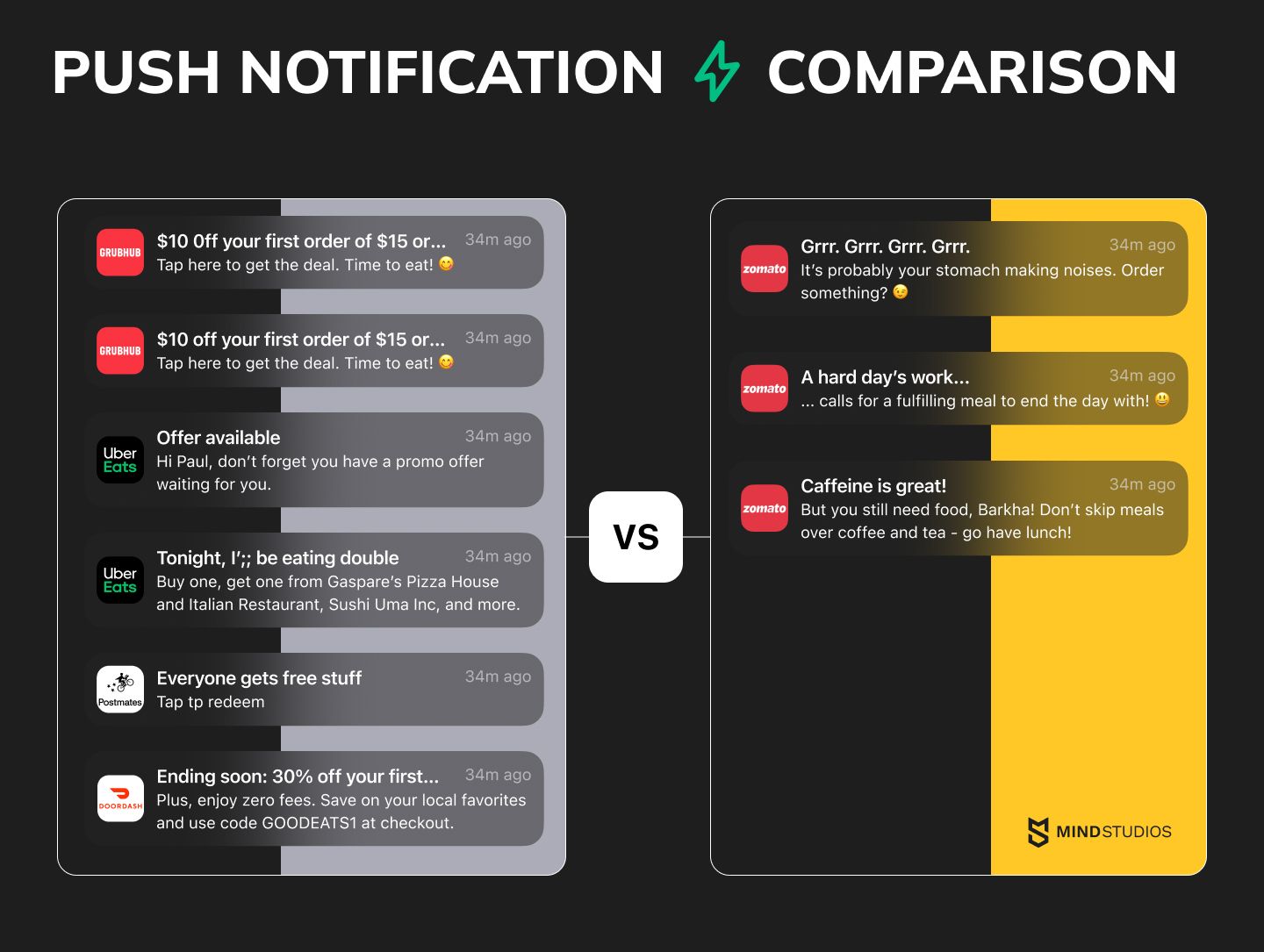
Evaluate your idea for a food delivery app
To build an app like Postmates that will bring you profit, you should start with evaluating your idea. This will help you better understand why you’re developing your food delivery mobile app, for whom, and how you can monetize it. Idea evaluation includes some important stages like market research, trend and business analysis, and defining your unique value proposition.
Start with market research
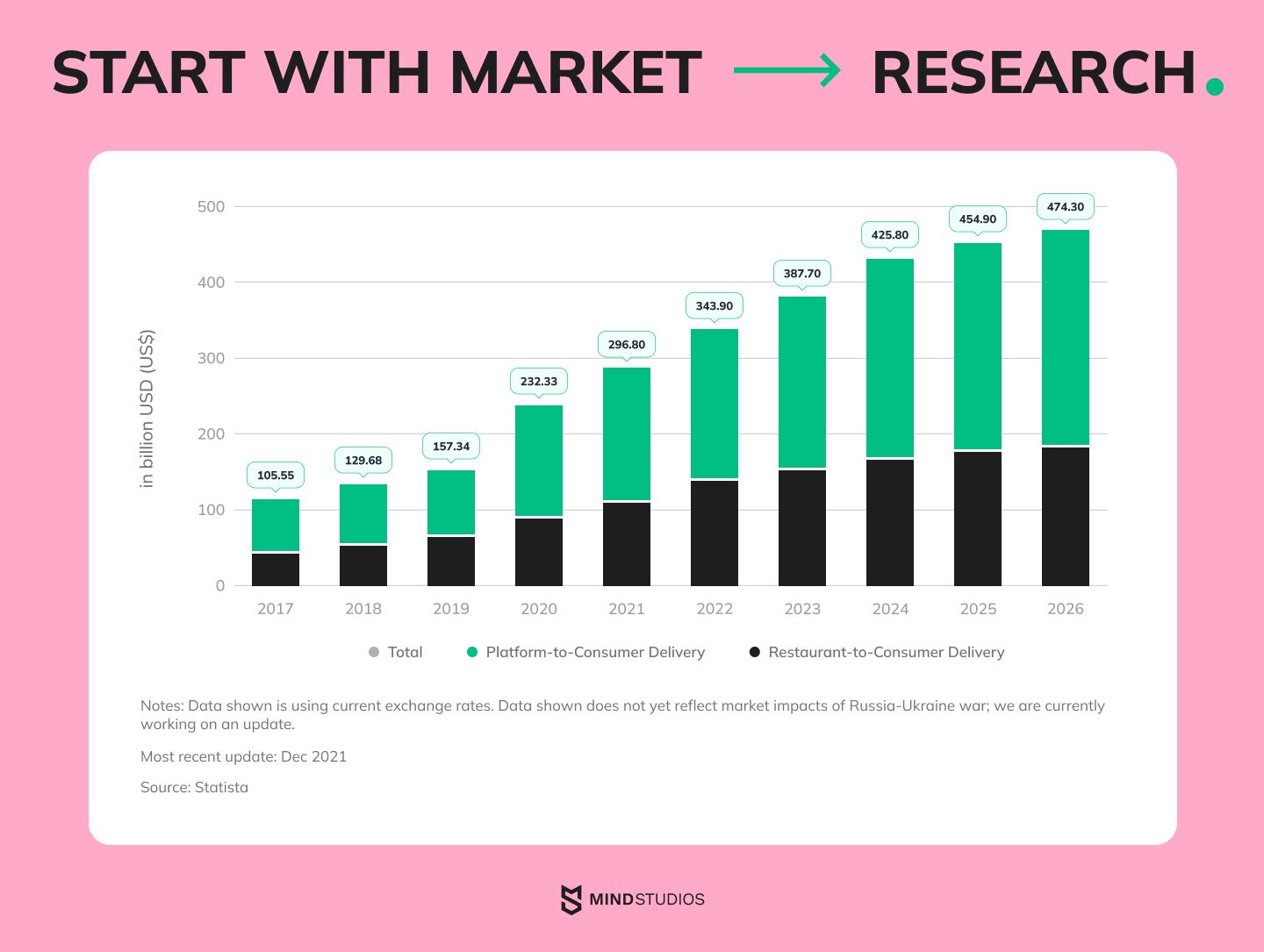
The first task when building a mobile app for food delivery is to research your competitors. What do they do and how do they do it? Who’s their target audience? Can you cater to people your rivals don’t target? What can you do to steal the spotlight?
When you go about developing your food ordering app, you’ll be able to conduct more precise and targeted research with the help of a project manager. But it doesn’t hurt to have a solid grasp of the market situation before you start paying for development. So here’s an overview of the current food delivery market leaders: Postmates, UberEats, and DoorDash.
Postmates
Postmates isn’t the cheapest service for customers. Its delivery fees range from $3.99 to $9.99. Still, people use this service a lot. Here’s why:
- Alongside delivery fees, Postmates often features discounts.
- There’s a Postmates Unlimited subscription for $20 a month that provides free delivery on orders over $20.
- Postmates doesn’t restrict deliveries to food; you can order groceries, gifts, flowers, and basically anything that one delivery person can carry.
- Postmates works 24/7.
These are the features to consider if you’re thinking about how to develop an app like Postmates.
Uber Eats
Uber Eats was launched when Uber was already famous for its on-demand taxi service. Food delivery was simply an expansion, not a completely new business. This made it easier for the company to market the new service.
If you want to create an app like Uber Eats, one of the most valuable insights we can give you is that you should pay a lot of attention to the UI/UX design. Uber Eats is known for its flexibility and simplicity in browsing options and placing orders. There are all kinds of search options: by distance, cuisine, dish, or place name. Users can even set dietary restrictions.
DoorDash
DoorDash is a service with one of the largest networks of partner restaurants in the US and Canada. Among the DoorDash app’s best features are:
- Featured restaurants
- Restaurants with free delivery
- Restaurants with free offers
- Popular dishes in each restaurant
- Order tracking
- DoorDash Delight
DoorDash Delight is a scoring system that measures customer satisfaction with restaurants. It reflects food quality, delivery speed, and overall restaurant popularity. A rating system and curated lists are features to strongly consider if you’re aiming to create a food delivery app like DoorDash.
These are the biggest names in the food delivery market. If you’re interested in how to develop a food delivery app, they’re the first ones for you to research. However, simply copying any or all of them won’t do you any good. So let’s head to the next stage of on-demand food delivery app development.
Conduct business analysis
Business analysis is aimed at understanding the demand for your application. It will help you find your buyer persona, choose a monetization model, and more. At this stage, you’ll also get a more precise estimate of the cost of developing a food delivery app than the estimate made before development began.
There are three different types of users food delivery apps cater to:
- People who are willing to pay extra to have food delivered to their doorstep
- Restaurant owners who see an opportunity to promote their restaurants without developing an app of their own or hiring delivery drivers
- People who are looking for a job that offers flexible hours
User personas are only a small part of business analysis. As you work with your food delivery app development company, you and your project manager will eventually fill out a so-called Lean Business Model Canvas. It covers all the basic information you need to understand what features to implement and how to navigate the food delivery business in general.
Moreover, your project manager will help you find out your unique value proposition — what your customers want most and how to provide that. It could be a user-friendly interface, fast delivery, a huge network of restaurants, or a tech-savvy application. To find your UVP, you need to be aware of the latest trends in the food delivery industry.
Here is a Lean Business Model Canvas to highlight the main values of Postmates:
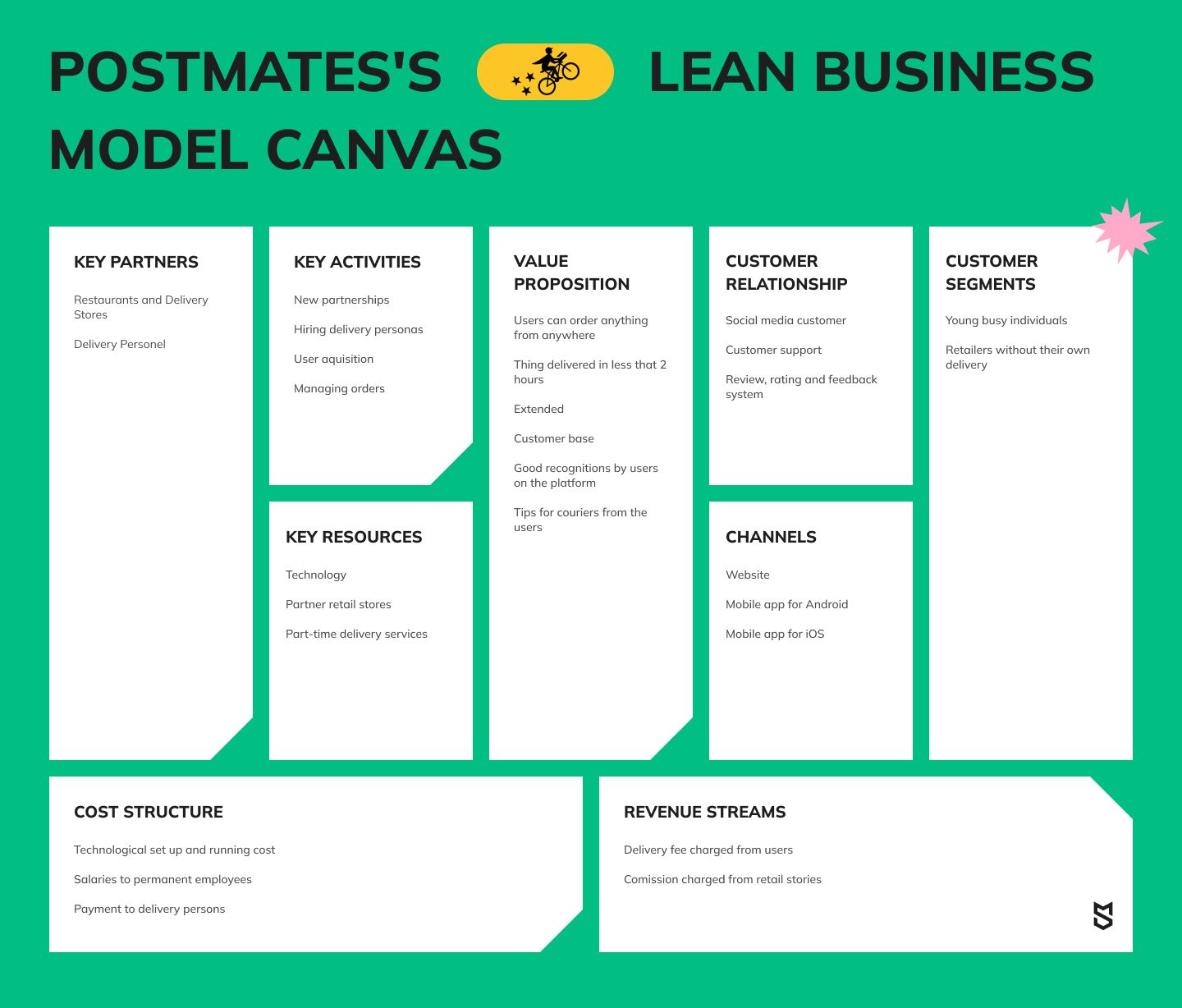
Research trends
The food ordering market is growing as technology progresses. Business owners should always keep an eye on trends to stay competitive. As an example, we’d like to bring to your attention these relevant trends:
Mobile payments
In-app payment options are a must in today’s on-demand services market. The whole world is moving toward a cashless future. Instead of providing all your delivery workers with POS terminals, it will be way cheaper for you (and more convenient for your contractors and customers) if you implement a payment gateway when you create a delivery app for the food business.
Synchronization with POS and other delivery systems
To make an app for food delivery competitive, it might be worthwhile to integrate it with the most popular restaurant POS software systems and couriers fleets.
Allowing restaurants to manage their whole digital business through one software is getting up steam. A Lisbon-based startup Kitch, founded in 2019 and acquired by Glovo on March 15, 2022 for an undisclosed amount, is exactly such an all-in-one management platform. It enables restaurants to:
- update menus across all delivery apps including UberEats, Glovo, and Bolt Food in one go
- receive orders from multiple platforms simultaneously
- streamline delivery with a commission rate of 5.9%
- control performance
- integrate Kitch with POS systems including Vendus and Zonesoft
- cooperate with third-party courier fleets like Glovo, Tookan, Deelivers, and Stuart
If you wonder how to develop a food delivery app like Postmates that will bring you profit, consider implementing a sync feature with those POS systems and courier services that your target users are accustomed to.
Delivery tracking system
![]()
The real-time delivery tracking app feature helps food providers significantly improve their driver performance. To do this, they equip their delivery apps with GPS vehicle tracking APIs and custom delivery push notifications so that every stakeholder can benefit from the seamless process:
- For couriers: picking the best routes for a particular order delivery
- For customers: providing full transparency regarding the delivery person and their vehicle; accessing to the delivery status updates; receiving timely reminders and alerts regarding delivery progress
- For providers: sending information about the vehicle resting time, its speed, and urgent vehicle’s maintenance factors
Depending on your business needs, you can also integrate a trendy QR/Barcode scanner into your food delivery mobile app to control order loading and streamline payments alongside equipping your app with a digital proof of delivery (POD). It could be, for example, a sign-on-glass feature that will allow your couriers to capture customers’ signatures and take photos to confirm that the delivery is completed successfully.
Artificial Intelligence
AI is a trend in mobile app development. Using AI when creating a food delivery app will allow you to:
- Speech recognition technology so customers can simply talk with your app to make an order.
- Chatbot technology to help users learn more about menu items, restaurants, and delivery options.
- Machine learning platforms to make predictions by analyzing incoming information. These can be used for offering advice on menus.
Check out our article with 8 tips on using Artificial Intelligence (AI) in mobile apps to get more information on this topic.
And it goes without saying that you need to develop apps for all categories of your users carefully.
Core food delivery app features
To know the cost of developing a food delivery app like Uber Eats or Postmates, you need to keep in mind that a complex system like these requires several applications to be built into one structure: the customer app, the backend, and the app for delivery persons.
For the customer app
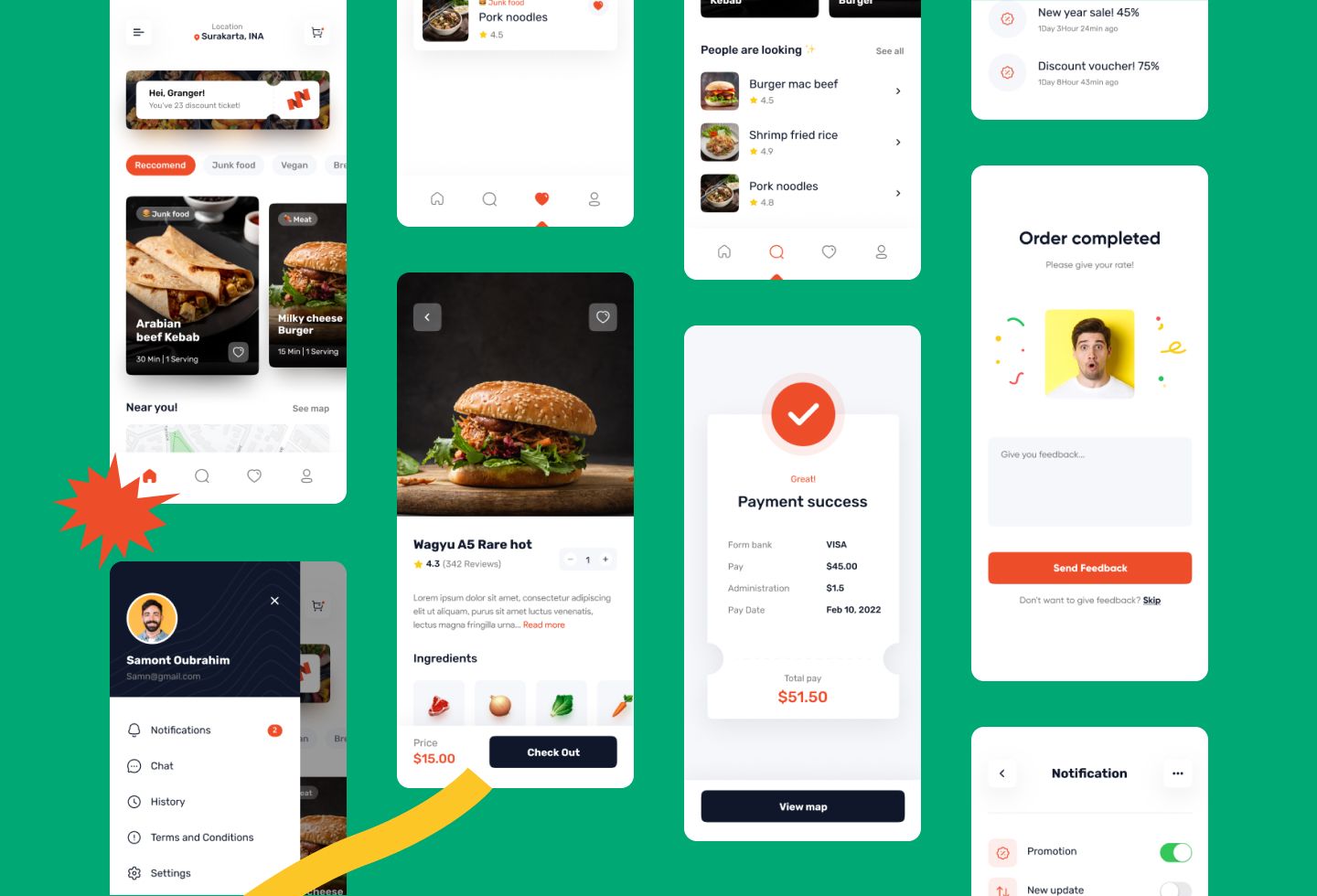
The customer app is, obviously, what customers use. It should have the following features:
- Onboarding
- User profiles
- Settings
- Menu screen (restaurant information, food categories, dish pictures, cooking time, prices, ratings & reviews)
- Dish screen (view photos, ingredients & proportions, grams & calories, prices & cooking time + make orders)
- Order screen (view and manage orders in a cart + enter payment details + enter a delivery address, preferable time of delivery, drop-off details, and other preferences)
- Location tracking
- Order control (map + track order movements)
- Order history (with ratings and reviews)
- Push notifications
For the backend
The second part is the backend, which should have these features:
- A database where all data on restaurants, menus, users, and delivery people are stored
- Push notification requests to be sent to the client app
- Chat powered by WebSockets to facilitate two-way real-time user–server and staff–server connections
- Logistics control
- Data management
For delivery people + admin panel
The third integral stage of developing a mobile app for food delivery is building an app that has a delivery people’s part and an admin panel in it.
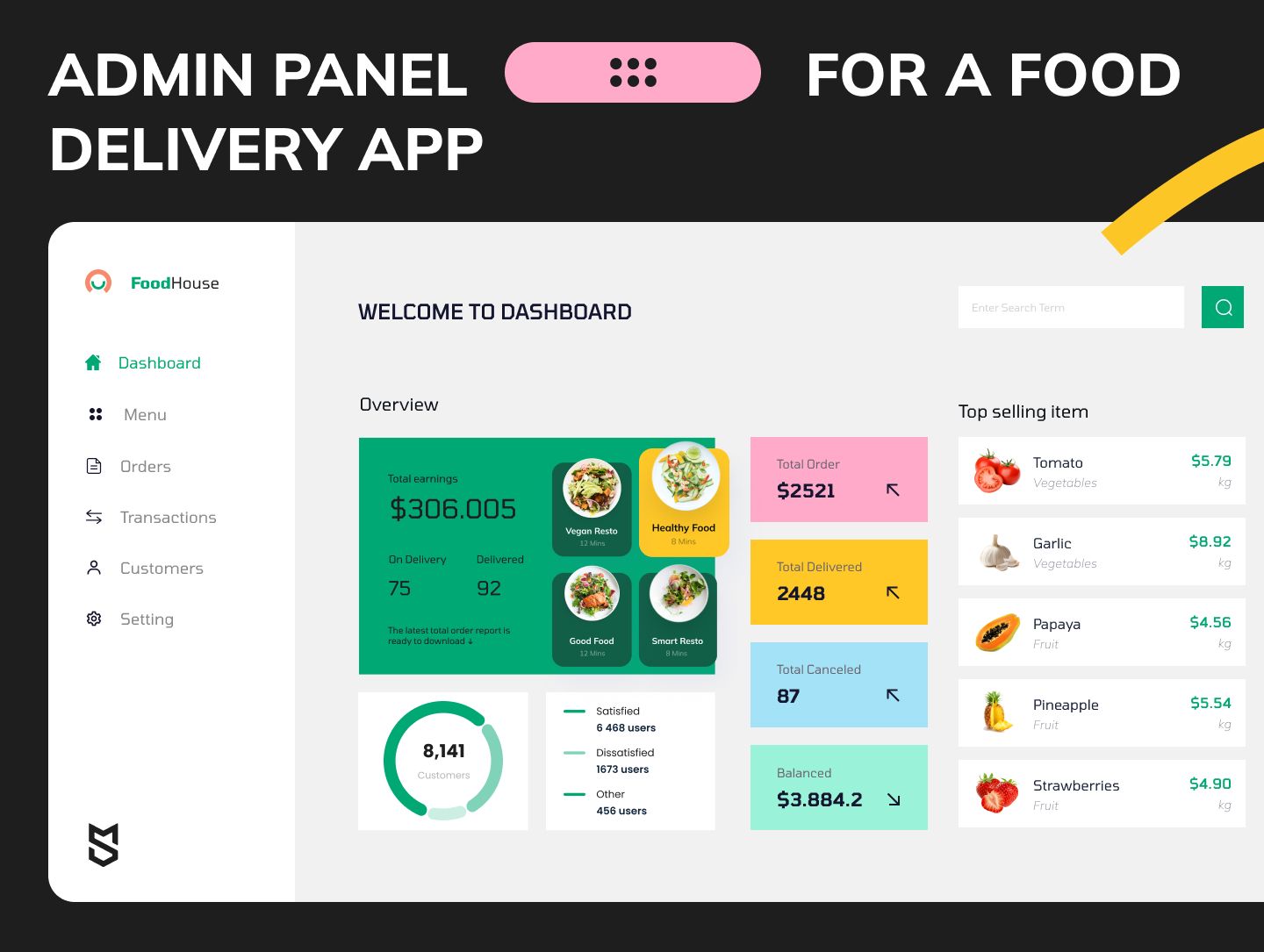
Admin panel should include the following features:
- Listings of places to get food from + menus
- Client base
- Revenue monitoring
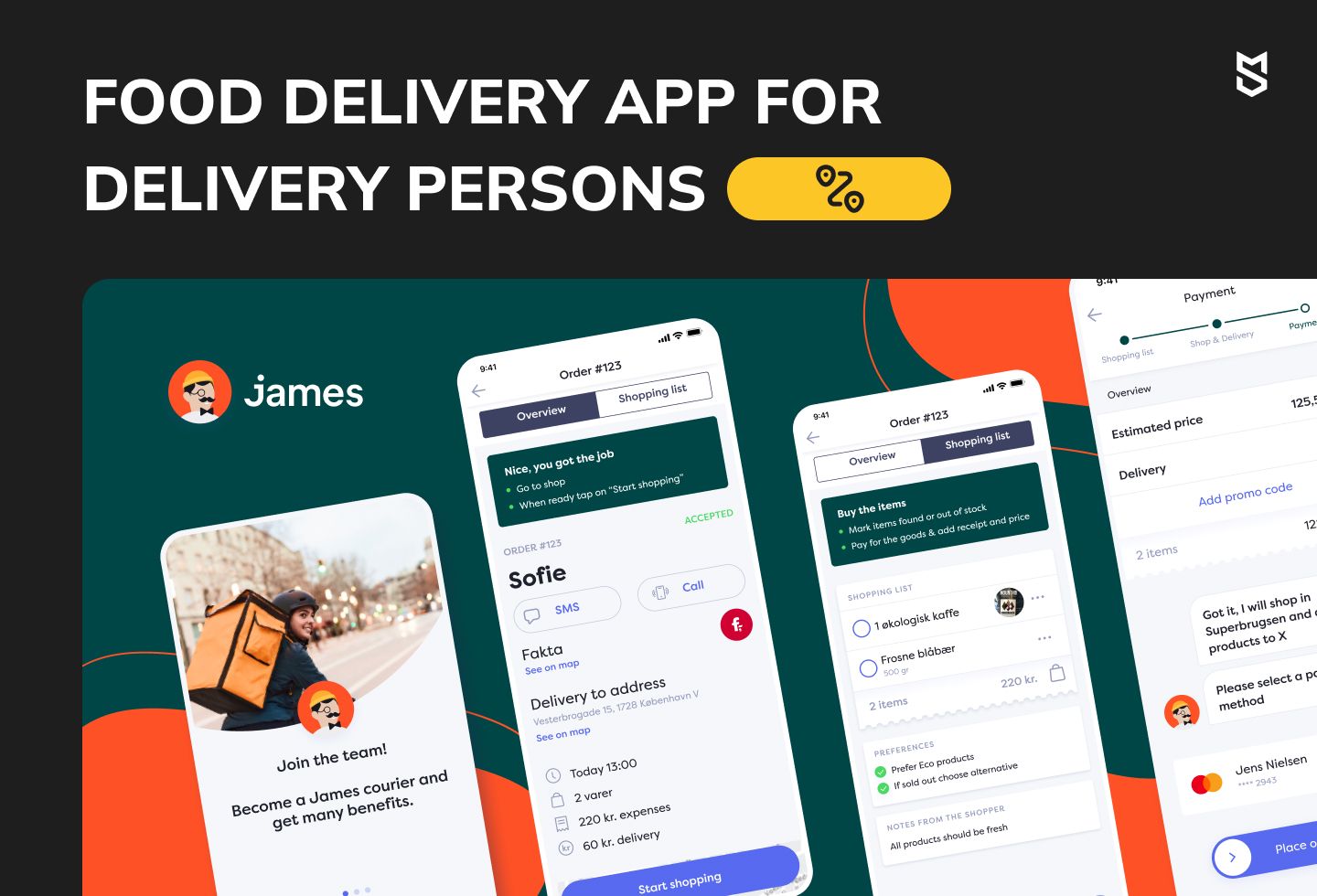
Features the app for delivery persons should provide:
- Order map
- Order details
- Courier profiles (optional)
- Earning dashboard (daily, weekly, monthly)
This is a list of MVP features for an on-demand food delivery app. If you want to develop an app like Postmates, the fully developed product may include way more features, such as quality control, order changes, receipt scanner, and customer care. It all will depend on your research.
Cutting-edge food delivery app features
As for now, we’ve selected several cutting-edge features that might help you be one step ahead of your rivals:
Advanced search filters
Chances are, providing your users with a variety of searching, filter, and sorting options will make them feel like you're taking care of them and increase their satisfaction. Allow users to search for food by keywords like “tune”, “salmon”, “sushi”, or “gluten-free”. More so, allow users to filter restaurants by:
- Pricing range
- Type of cuisine
- Brand name
- Location
- Open hours
- Available tables (if you plan to provide a booking feature)
- Ratings (e.g. you can add hygiene ratings as UberEats and Deliveroo did)
- Special offers (e.g. discounts, special dates, 2 for 1, etc.)
- Special options (e.g. vegan/vegetarian menu, gluten-free products, sugar-free desserts, etc.)
You can enable users to sort menus and dishes by price, cuisine, food category, cooking time, and calories. No less important is to allow users with intolerance to particular foods or allergies to easily exclude dangerous ingredients from their listings.
AI-powered chatbot
As we’ve already mentioned, AI technology can be used for establishing real-time communication between customers, couriers, and support services, enriching your app with a voice-recognition tool, and helping users find what they want.
For example, with the help of AI and machine learning, you can collect a lot of information about your customers’ preferences in cuisines, restaurants, meal behavior, etc. Based on these insights, your app can deliver highly personalized content, let’s say, some receipts of dishes from your customers’ favorite cuisine or a story about how their favorite restaurant brand was created, and so on.
AR food creation
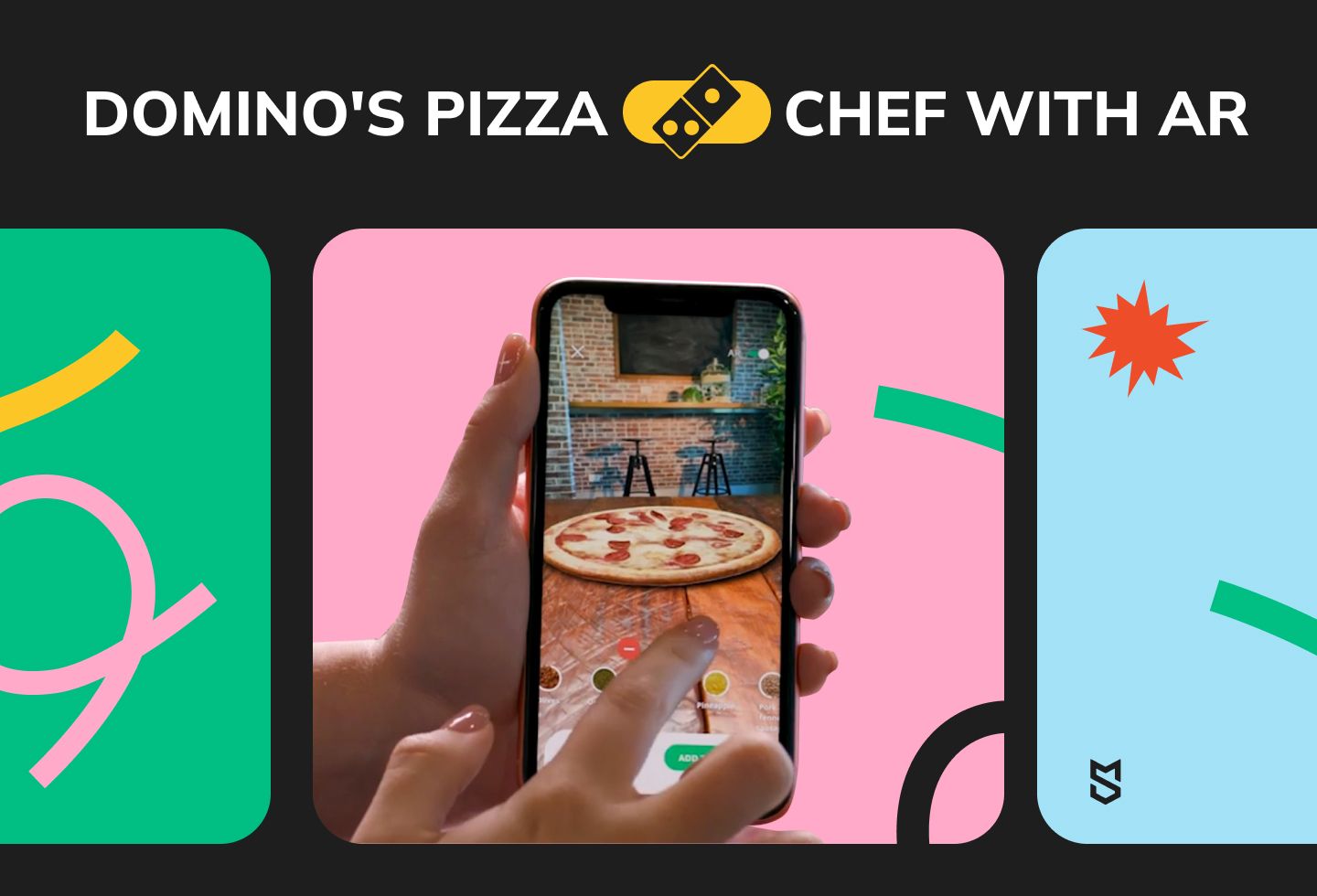
To enhance user engagement, in 2018 Domino’s pizza introduced an augmented reality pizza chef app feature. It allowed users to try themselves in cookery and create their dream pizza in real-time. Using Google’s ARCore and Apple’s ARKit frameworks, users could look at the pizza made by them from all angles steaming right in front of their dinner table.
If you want to create a food delivery app that will have a head start over rivals, consider implementing app functionality empowered with AR.
Delivery person security
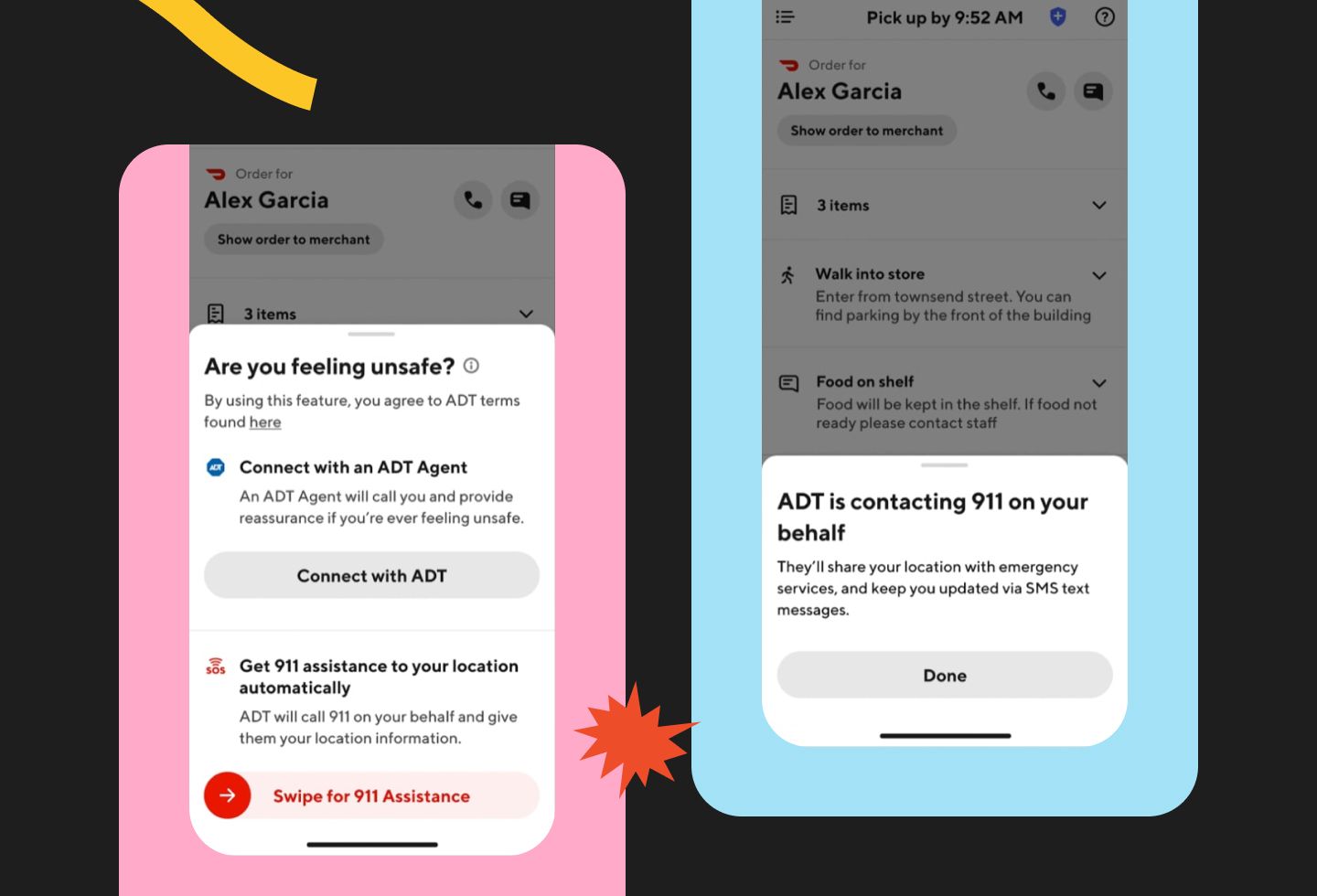
To ensure that your customers’ food orders will be delivered on time and to the right place, you need to care about your delivery workers as well. You can take an example of DoorDash that last year added a new in-app toolkit called SafeDash. This toolkit consists of two features:
- Safety reassurance call that implies connecting with an ADT agent through the DoorDash app and staying on the line until the delivery person feels safe
- Emergency assistant button, by clicking on which the DoorDash courier is immediately connected with an ADT agent and emergency responders
Apart from your delivery staff safety, you can also think of some sensible ideas on how to encourage and retain your delivery persons to work with your food delivery service. A few ideas from this writer’s mind are providing rewards for an invitation, bonuses for deliveries completed on time, the ability to bargain on their delivery fees within an app, etc.
Follow the UI/UX design tips
Your user experience will directly depend not only on the features your food delivery application will provide but also on how convenient the app interface is and how eye-catching the app color scheme is.
To help you develop an app like Postmates with the right UI/UX design, we’ll share several proven tactics from our designers:
Put food images front and center
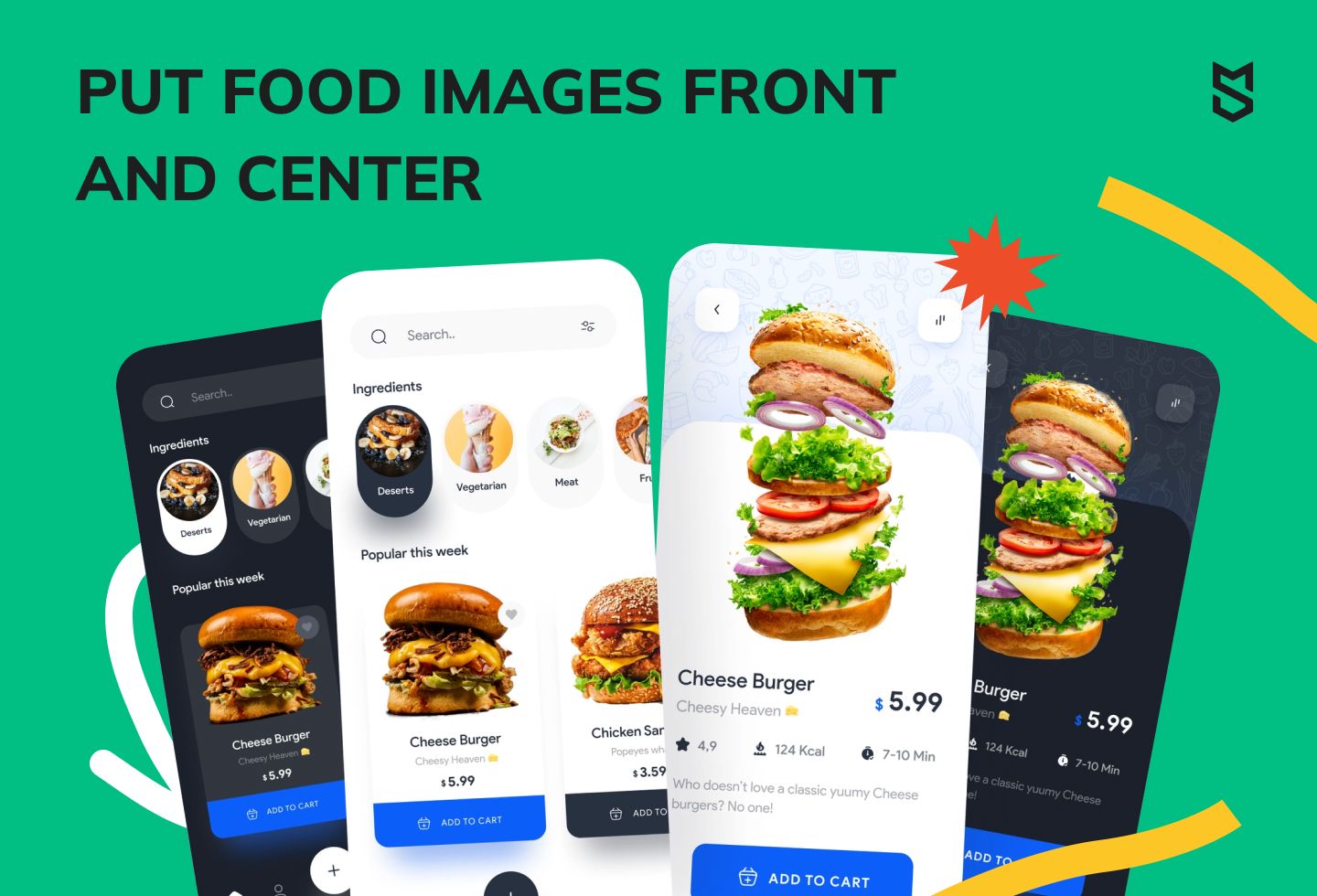
When building a food delivery app like UberEats or Postmates, don’t forget about the core reason why users open it — to order food. That’s why it is vital to avoid cluttering your app screens with lots of buttons, complex graphics, squiggles, and florid fonts. Rather, on the contrary, use clear lines and a lot of space which you can fill with high-quality food images.
Also, pay extra attention to the number of images. It’s important to illustrate a restaurant's menu and each particular item (or a particular ingredient, if you plan to offer meal kits) with a high-quality image and description.
Move sign up/log-in form to the end of a navigation bar
More often than not, mobile apps ask users to sign up or log in at the first screens of onboarding. In terms of a food delivery app, where all features as a rule are not new for users and UX elements are intuitive, it's worthwhile to start with a search bar on the first app screen.
It is a search bar, not a signup screen, that your users seek most in your app to find a nearby restaurant, pick a particular menu item, and order delivery. The moment when it's appropriate to ask a user to create an account could be when they move to an order screen.
Indicate clear delivery times and costs
To create a delivery app for food ordering with enhanced user experience, make sure the delivery times are listed next to the restaurants and particular dishes so that users can easily understand how much time it would take for them to get their orders.
The same rule acts for the delivery costs. You need to present them close to the menu items. See an example of how user-friendly Postmates, DoorDash, and UberEats show their delivery times and costs:
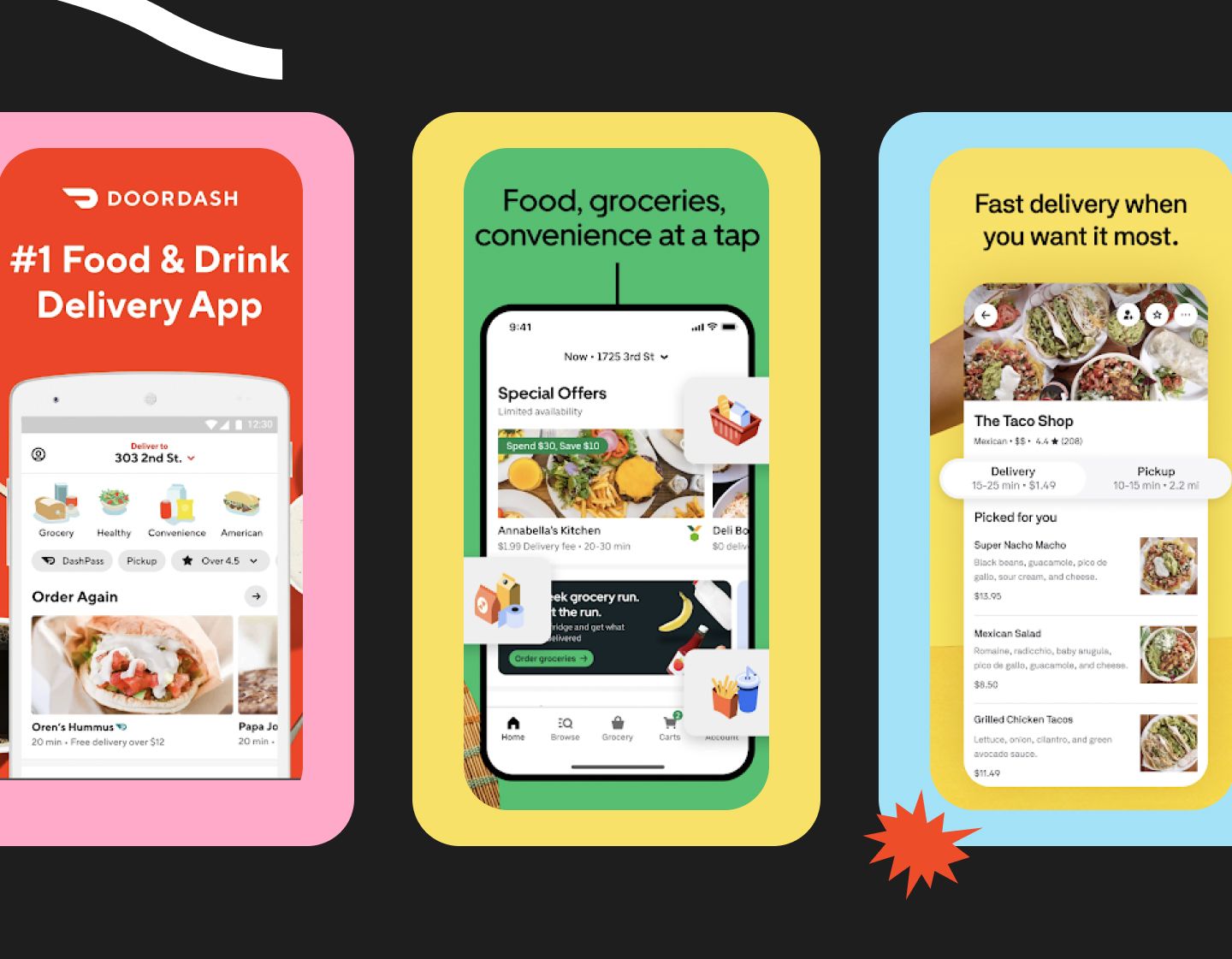
Run A/B tests to find the best UI/UX solutions
Hardly any popular mobile app design has been created in one go. Item listing layouts, font sizes, icons, buttons, and color schemes — a lot of UI/UX elements, if not all, as a rule, go through multiple iterations.
In Mind Studios, we often create up to five initial UX concepts for mobile app development and collect feedback from clients, beta testers, and intended users. Only after getting UX approved, do we shift towards UI concepts and repeat the whole process.
In some cases, it might require including a robust mobile app analytics tool to indicate the weak spots in app design that block your target users from taking the actions you want them to take. Based on insights from the audit, an experienced mobile app development team would be able to help you get rid of those roadblocks.
Food delivery app development tech stack
Now, it’s time to talk about the development of your food delivery app from the tech side. What technologies should your team apply for launching a tech-savvy yet smoothly operating food delivery app? We’ve described the commonly-used tech stack for Postmates-like apps in the table below:
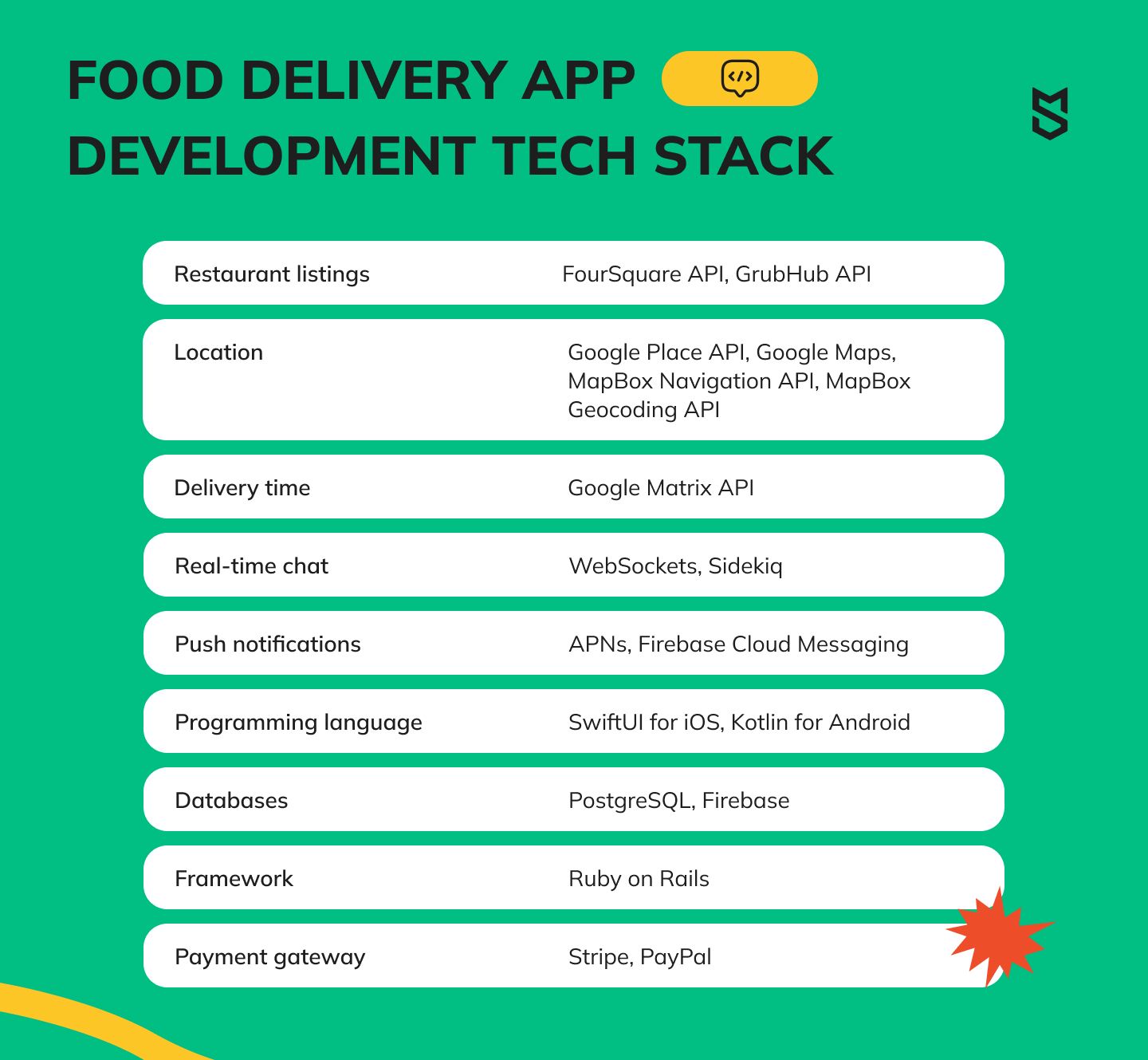
Development team to create a food delivery app
To develop a top-notch food delivery app like Postmates or DoorDash, you’ll need at least the following mobile app development specialists:
- 1 project manager
- 1 – 2 Android developers
- 1 – 2 iOS developers
- 1 – 2 UI/UX designers
- 1 backend developer
- 2 QA engineers
Depending on your current business scale and the complexity of the project you’ve conceived, you’re likely to need more dedicated specialists including a product manager and a business analyst.
In order to successfully start developing a food delivery application, you also need to choose reliable development partners. As a rule, outsourcing your project development to offshore software companies can bring many advantages to the table.
How to choose the right application development partner?
If you wonder how to start a food delivery app development successfully, then choosing a trustworthy mobile app development company will play a key role. You need to find a partner who will match all your criteria regarding:
- Time-zone difference and location
- Expertise
- Prices
- Communication skills
- Level of security
- Organization and discipline
There are a lot of online platforms like Clutch, GoodFirms, and Upwork that could help you distill your choice up to five potential mobile app development companies by filtering them with ratings, relevant experience, location, hourly rates, etc. Contact their previous clients to figure out more details about their collaboration, especially when the companies had been bumping into some challenging situations: How did they overcome them? By doing this, chances are, you’ll filter out a couple of candidates.
Contact the rest of the companies personally and pay attention to their response time, willingness to help you bring your idea to life, ability to listen to and hear you, communication skills, security policy and make the final choice.
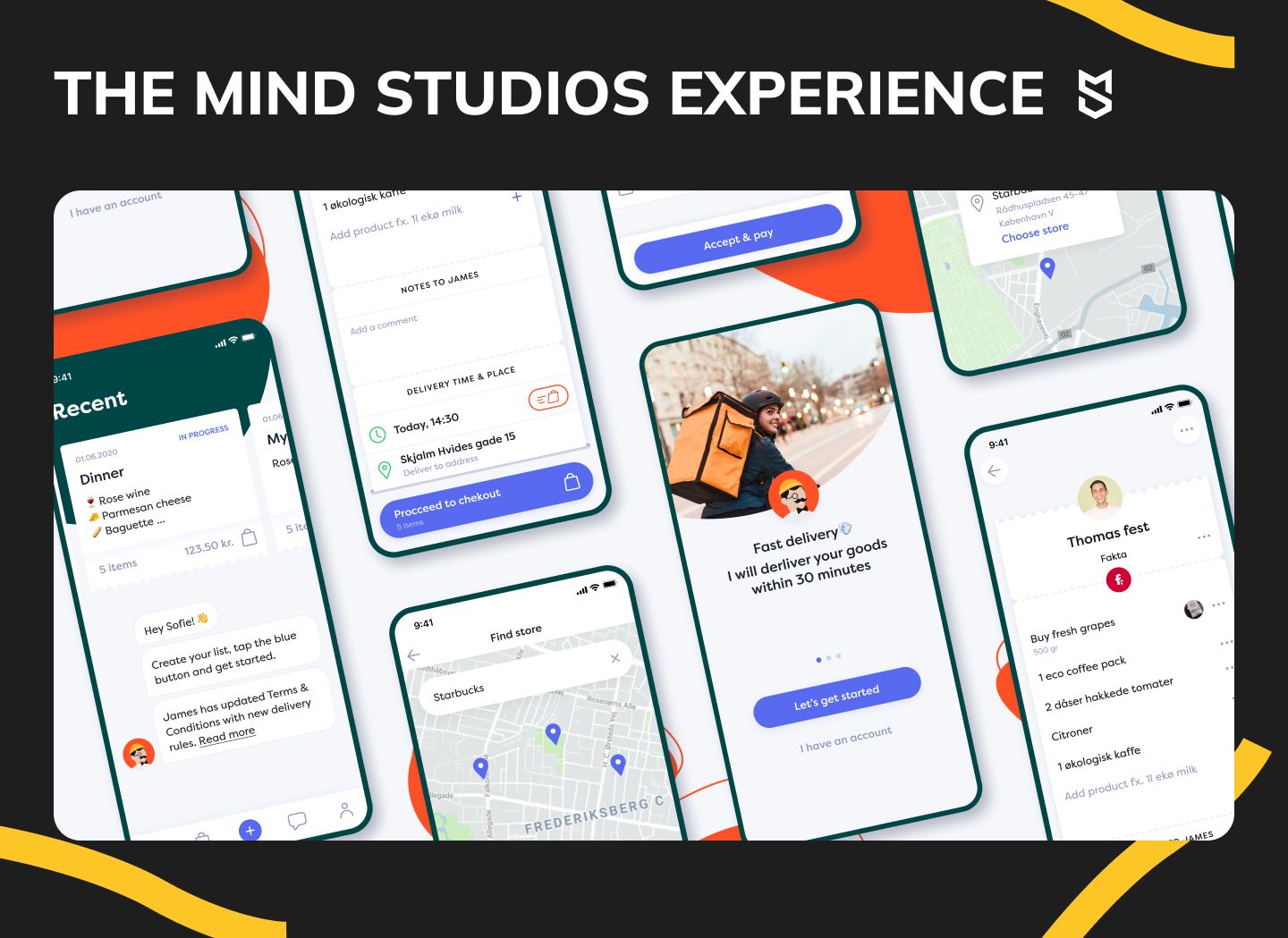
As for Mind Studios, we have expertise in developing a delivery mobile app. Our project, the James Butler delivery app for Danish people, consisted of developing four mobile applications: two apps (for iOS and Android) for customers and two — for delivery persons, in three months. Thanks to impeccable communication between the client and our team and a well-established development process, we managed to deliver the high-quality product on time and within budget.
How do on-demand food delivery apps generate revenue?
There are two main options to monetize an on-demand food delivery app:
- Restaurant fees
- User fees
A restaurant fee means that to be featured in your app, partner restaurants pay either a fixed amount (like a monthly fee) or a percentage of each delivered order. Also, restaurants can pay an additional fee to be in a "Featured" list of recommended establishments.
A user fee means that when users make an order via your app, they pay extra for it to be brought to their doorstep. This fee can also be either a fixed fee (per order) or a percentage of the order total.
Lately, delivery services have taken to adopting a subscription model for users as well: DoorDash and Postmates food delivery apps now offer subscribers free delivery above a set order amount.
This model comes in handy for those who use the service frequently and for large orders.
In-app advertising, a monetization model popular in all kinds of other mobile apps, isn’t too common in on-demand delivery apps, though it can be used as well.
How much does it cost to develop a food delivery app?
Developing a food delivery app like DoorDash or Uber Eats may be expensive for several reasons. It’s difficult to estimate the precise costs before discussing in depth the demands of the business and the desired features of the app. The process of creating an app has been roughly classified into three categories, each representing a different degree of complexity.
| App Model | Estimated development time | Initial contract price |
|---|---|---|
| Simple app | 3–6 months | $30,000–$36,000 |
| Medium app | 6–9 months | $50,000–$75,000 |
| Advanced app | 10–15 months | $90,000–$150,000 |
Aside from the initial food delivery app costs, you have to cover 15–20% of the total food delivery app development cost each year to maintain and improve your platform to compete with the expanding market competition.
A sophisticated food delivery service, like DoorDash or Uber Eats, with the potential to operate in several cities and countries will require a minimum investment of $150,000 plus additional fees. For the rest, the app development cost for food ordering service is entirely based on the app's complexity and the functionality you require to meet your particular business objectives. You can contact our experts for a free consultation to get a rough estimate for your idea.
Our estimate example for food delivery app development
Price for developing a food delivery app can range from $78,000 to $148,500. Depending on the location and experience, professional developers may charge between $45 and $150 per hour.
Here’s a rough estimate we’ve made for a better understanding of where the money goes.
| Food delivery app development stages and cost | ||
|---|---|---|
| Development stage | Hours | Cost |
| Project management | 400+ | $18,000 |
| Idea validation + specifications | 100+ | $4,500 | Design for Android & iOS platforms | 160 – 200 | $7,200 – $9,000 |
| iOS development | 640 – 800 | $28,800 – $36,000 |
| Android development | 620 – 800 | $27,900 – $36,000 |
| Backend | 580+ | $26,100 |
| Testing and improving | 320+ | $14,400 |
| Admin panel | 100+ | $4,500 |
| Total | 2,920 – 3,300+ | $131,400 – $148,500 |
If you're looking for a qualified team with considerable expertise in food delivery app development, let Mind Studios offer you an all-inclusive cost estimate. Contact us and we will provide you with a full quote so you will have an idea how big of an investment you need to develop a food delivery app.
Factors influencing the development cost of a food delivery app
A food delivery app's development expenses are affected by elements such as app type, required features, tools and technologies, team location, design complexity, and app security. Furthermore, the hourly rate of a specialist is impacted by their skill level and the specifics of their job. To establish a successful delivery application, experts such as business analysts, project managers, UI/UX designers, front-end developers, back-end developers, QA specialists, and DevOps are required.
Let’s go over these factors in some detail.
App features
The main thing you should know is that building a food delivery app from scratch is a complicated process. It's a versatile system that serves a wide range of users. Therefore, the core characteristics should be developed in a way that satisfies a rather big audience.
Ask yourself, “Who normally uses a food delivery app?”. Chances are, these are:
- Restaurants that take and fulfill orders
- Clients who place orders
- Order-delivery couriers
- An admin managing the app
All of these users are at the center of the four parts of the delivery system.
App for restaurants
It's the restaurant-side meal delivery app. The following are key features:
- Registration and login. This food app development feature will allow restaurant owners and staff to register and log in to the app.
- Order management. With this feature, restaurants will be able to accept, reject, and notify the status of the order, among other things.
- Menu management. The ability to show restaurant menus is required for the creation of food-ordering apps. Add this function so that restaurant owners can display and change their menus and guests can always have the most up-to-date information.
- Ratings and reviews. Implement a review admin panel so that restaurant owners receive feedback about their establishment from diners.
- History of orders. A restaurant's order history will be used to evaluate revenue on delivery and in the event of a dispute (for example, wrong delivery).
Client-side app
This is where your consumers will put their orders. Take care of the app's usability and intelligent UX to make it more convenient and interesting. Also, keep the following features in mind:
- Registration and login. Signup and login are the two most important things to provide when developing a food-ordering app. Make the registration procedure as simple as possible for users, including social network login.
- Search. Finding places and specific foods quickly and precisely is crucial for a good user experience, so don’t forget to add this feature to your requirements for the development of a restaurant ordering app. Include the chance to browse local eateries as well.
- Geolocation. The geolocation feature is required while developing a meal delivery service. Customers will use it to find nearby restaurants and notify the system of the delivery destination.
- Payments. In-app payment option is one of the important value proppositions in a food delivery app. Make the checkout procedure as simple as possible, and include multiple payment alternatives for added convenience.
- Push notifications. Implement push notifications in your app to keep your clients up to date on the status of their orders. You may also remind users about special deals or promotions using this feature.
- Ratings and reviews. The client-oriented food delivery app requires a review and rating component. Allow your customers to rate and comment on quality of delivery, restaurants, and food.
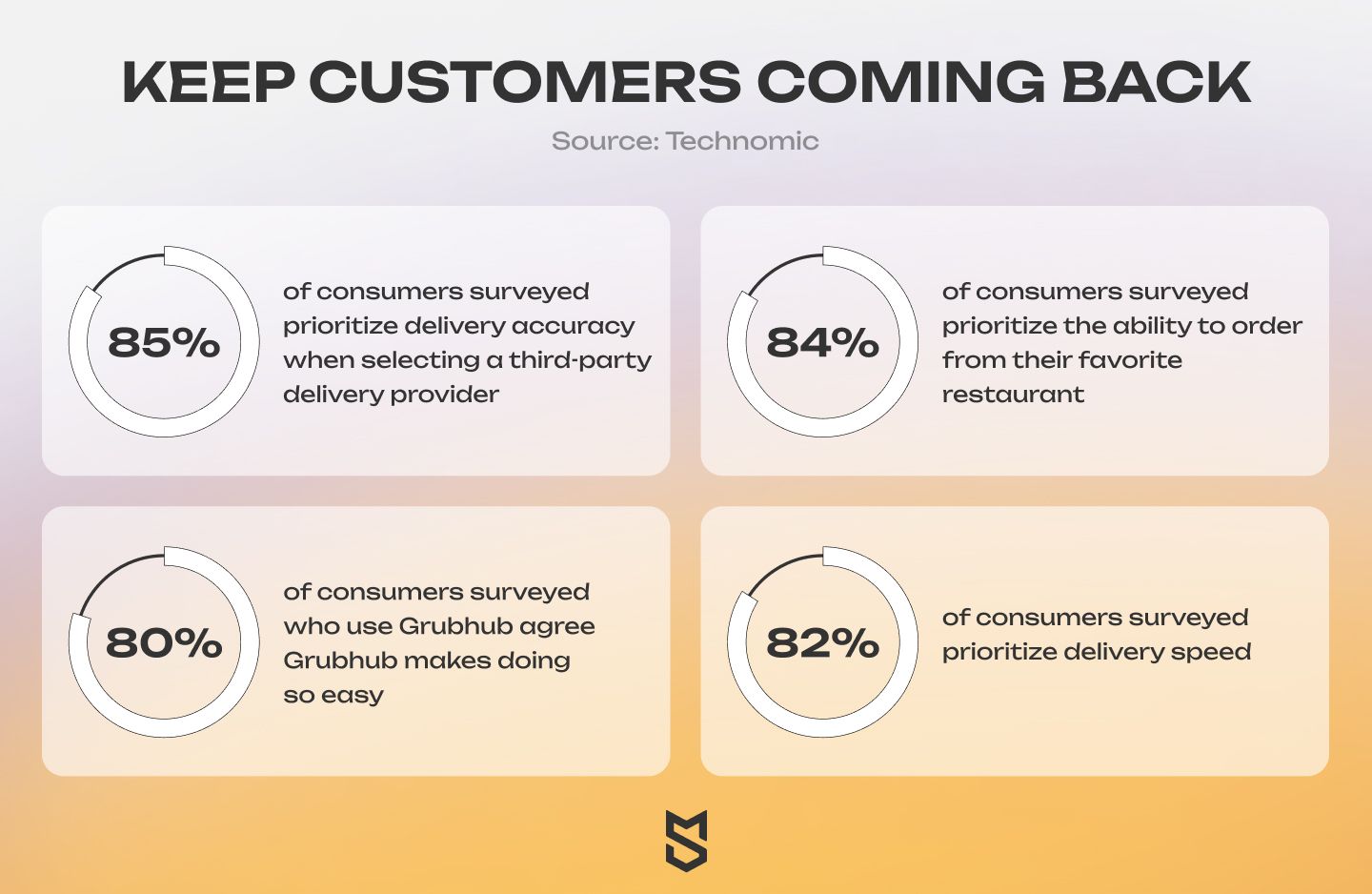
Courier app
Developing an online food ordering app entails establishing a separate application for couriers. It must be simple enough for the delivery person to complete orders while on the road. On top of an intuitive UX, you will need basic features like:
- Registration and login. Create a registration and login feature to allow the courier to create an account and accept food delivery orders.
- Geolocation. Maps and geolocation are required for the food delivery app development solution. This feature enables couriers to create and estimate delivery routes and track their whereabouts in real-time.
- Order information and status. Add order information so that couriers may double-check all delivery details when picking the order up. The order status, in turn, is required to keep clients up to speed on where their order is.
- History of orders. Order history is required in restaurant application development for the courier to be paid fairly for food delivery.
Admin panel
The platform for managing your food delivery app is an admin panel. The administrator can monitor the activities of restaurant, customer, and courier apps. The following features are often necessary here:
- Restaurant management. The admin can add and remove eateries from the app and set permissions on the platform for restaurant owners.
- Payment processing. The admin can keep track of all payments made through the app.
- Courier management. Admin needs to be able to block certain couriers that get complaints from users often (things like order theft, client harassment, rudeness, etc.). Likewise, they need to be able to check applying courier credentials (valid ID and driver's license). Orders fees also must be managed by an administrator.
- Analytics. The analytics tool is useful for business development. It allows the admin to get vital information on client behavior, demand for specific eateries, and so on.
Design and user experience
Technology-driven products and services must follow design principles. By adhering to these principles, designers build products that are consistent, unified, and intuitive for consumers.
Following design principles will improve the user experience of your product or service, leading to higher customer satisfaction and loyalty. The relevance of design principles in technology-driven enterprises cannot be overestimated, they play a critical role in product and service success. These are the core design principles of developing a successful food delivery app:
- The design is made with mobile devices in mind.
- Since food delivery services need to provide customers with an efficient and smooth user experience, the design makes ordering meals and tracking the delivery of orders simple.
- The design contributes to the establishment of a strong brand identity by distinguishing the company from rivals and instilling confidence and trustworthiness in customers.
- Design promotes a positive client experience which in turn boosts client loyalty and satisfaction.
However, a distinct brand identity does more than just make your app look better than the competition. It's a multi-factor formula that takes into account not just the visual style of your app but also your brand's voice in all forms of communication both within the app and in external ads, emails/messages, and push notifications, among other things.
Estimating food delivery app development costs
There are multiple food delivery app business models. An aggregator app that shows consumers all the restaurants in their desired area is one option, and a delivery app that links dineries with customers and intermediary services is a different one.
The features of your food delivery app would be based on the nature of your request. The cost of a food delivery app development will depend heavily on that. However, there are other factors that you should consider before you decide on developing your app.
Technology stack
To set up a food delivery service similar to Uber, developers must create mobile applications as well as an admin interface. The tech stack chosen is determined by the kind of app development: native or cross-platform. Native app development is more expensive but gives better performance, whereas cross-platform development is less expensive but faces certain challenges that might impact performance.
In summary, you will need:
- Programming language: The most popular programming languages for food delivery app development are Java and Kotlin for Android, Swift for iOS, and Python for cross-platform.
- Backend: You have a variety of backend alternatives, including Node.js, Ruby on Rails, and Elixir.
- Database: You can store data in MySQL, PostgreSQL, or MongoDB.
- Cloud services: To host the app, you can utilize cloud services such as Amazon Web Services (AWS), Microsoft Azure, or Google Cloud Platform (GCP).
- APIs: APIs such as the Google Maps API and the Twilio API can be used to deliver location-based and messaging services.
- Payment gateway integration: You can integrate payment gateways such as PayPal, Stripe, or Braintree for secure payment transactions, which are usually implemented via API.
Java and Kotlin are two popular programming languages for developing Android food delivery apps. Android Studio is the official Android integrated development environment (IDE), providing code editing, debugging, and a customizable coding environment. ADT (Android Developer Tools) includes a variety of debugging tools, emulators, UI builders, and automation functions. The Android SDK is a collection of development tools that includes a debugger, libraries, emulators, tutorials, and documentation.
Objective-C and Swift are the most popular programming languages for iOS development. Swift provides dynamic libraries that minimize app size and enhance performance, whereas Objective-C allows for object-oriented programming and a dynamic runtime environment. Apple XCode is a toolkit that enables developers to create mobile applications, whilst the iOS SDK gives sophisticated applications access to various functionalities and services of Apple devices.
Google's Flutter is a UI software development kit for producing cross-platform apps for Android, iOS, and web operating systems. It includes tools for creating native-like apps with enhanced performance and functionality. React.js is a powerful JavaScript toolkit for creating websites with minimal coding that includes a virtual DOM and component reusability. Node.js is an excellent addition to the tech stack for enhancing efficiency and productivity in backend development.
The total cost of developing the food delivery app is affected by all of these factors. Since cloud services aren't free and certain APIs aren't open source, the client and the team need to weigh the pros and cons of whether to pay for the API or to create the functionality themselves.
Development resources and team
The number of hours required to complete an app feature is determined by the development partner you select. Working with a freelance developer or an app development company will cost differently. The hourly pricing is also heavily influenced by the experience of the developers working on your food delivery software.
Adding complex features will increase the development hours and skills necessary to create an app. As a result, it will have a direct impact on food delivery application development costs.
Freelance developers
Freelancers might cost you less to develop a food delivery app. You can find them on freelancing sites like Upwork. However, there are things to keep in mind.
Freelancers charge less because they usually take on fewer responsibilities and offer little to no risk mitigation. If something happens to the person building your app, the development will stall until the situation is resolved or you find another specialist.
Additionally, when working with freelancers, you’ll most likely need to hire multiple people, spending time (your own or your HR department’s) to find and interview each of them. If you’re not in a rush to launch your delivery app and would rather save the money, freelancers might be your option.
Outsource developers
Companies tend to charge more for developers' hourly rates and liability mitigation. If a developer cannot continue working on a project for some reason, the company must replace them at its own expense or compensate the client for project delays. If the dev's equipment breaks, the company must replace it quickly to avoid project delays.
In addition to a high degree of skill, the client receives the assurance that the project will be completed on time and within the scope, regardless of most circumstances. Companies also usually provide better NDAs and project management.
It’s also possible to save costs while working with a development company: by finding partners from countries with lower average hourly rates (Eastern Europe instead of US-based, for example), starting with an MVP instead of a full launch, and working according to Agile principles (dividing the development process into sprints and distributing payments).
Future trends and considerations
Food delivery businesses confront many challenges including a high barrier to entry, severe rivalry, and sophisticated operational management. To address these issues, firms should use low-cost technological solutions, target specific customers, and collaborate with local restaurants. This can cut down on the requirement for extensive delivery capabilities while also tapping into loyal consumer groups.
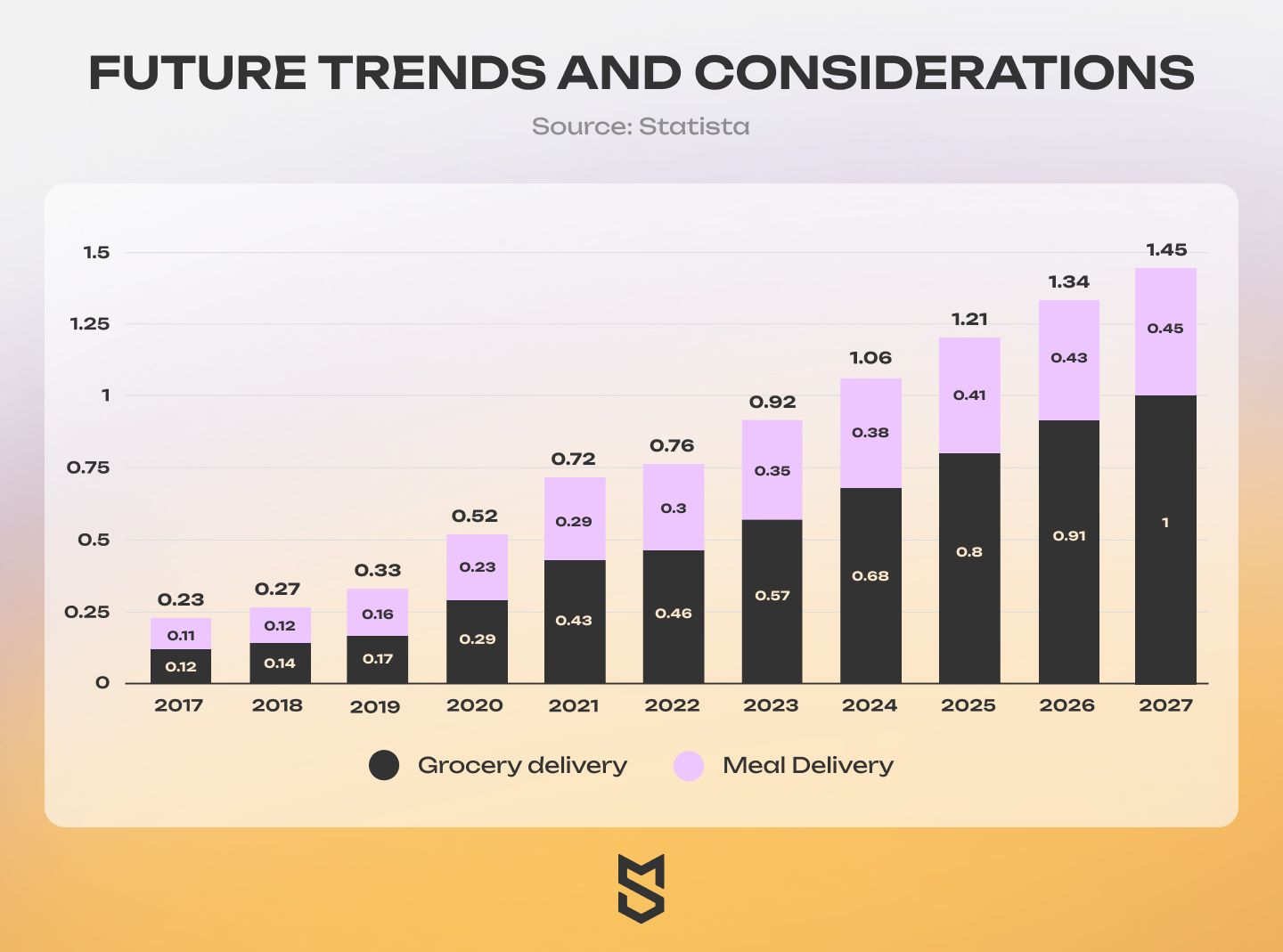
Businesses that provide a distinct and distinguished experience, such as a greater selection of restaurants, faster delivery times, and creative features, can stand out in a crowded market. Complex operational management necessitates real-time coordination between restaurants, drivers, and customers, needing sophisticated systems for order processing, dispatching, and communication. This needs the support of a capable development team.
Food delivery app development: Conclusion
It seems like online on-demand food delivery apps are here to stay, which is why their variety on the market keeps growing. However, mobile apps and web services that offer something newer, with a higher level of service, or just different will always be in demand. You just need to ensure you hire a mobile app development company that meets your expectations.
If you have any questions about food delivery app development, feel free to contact us.

